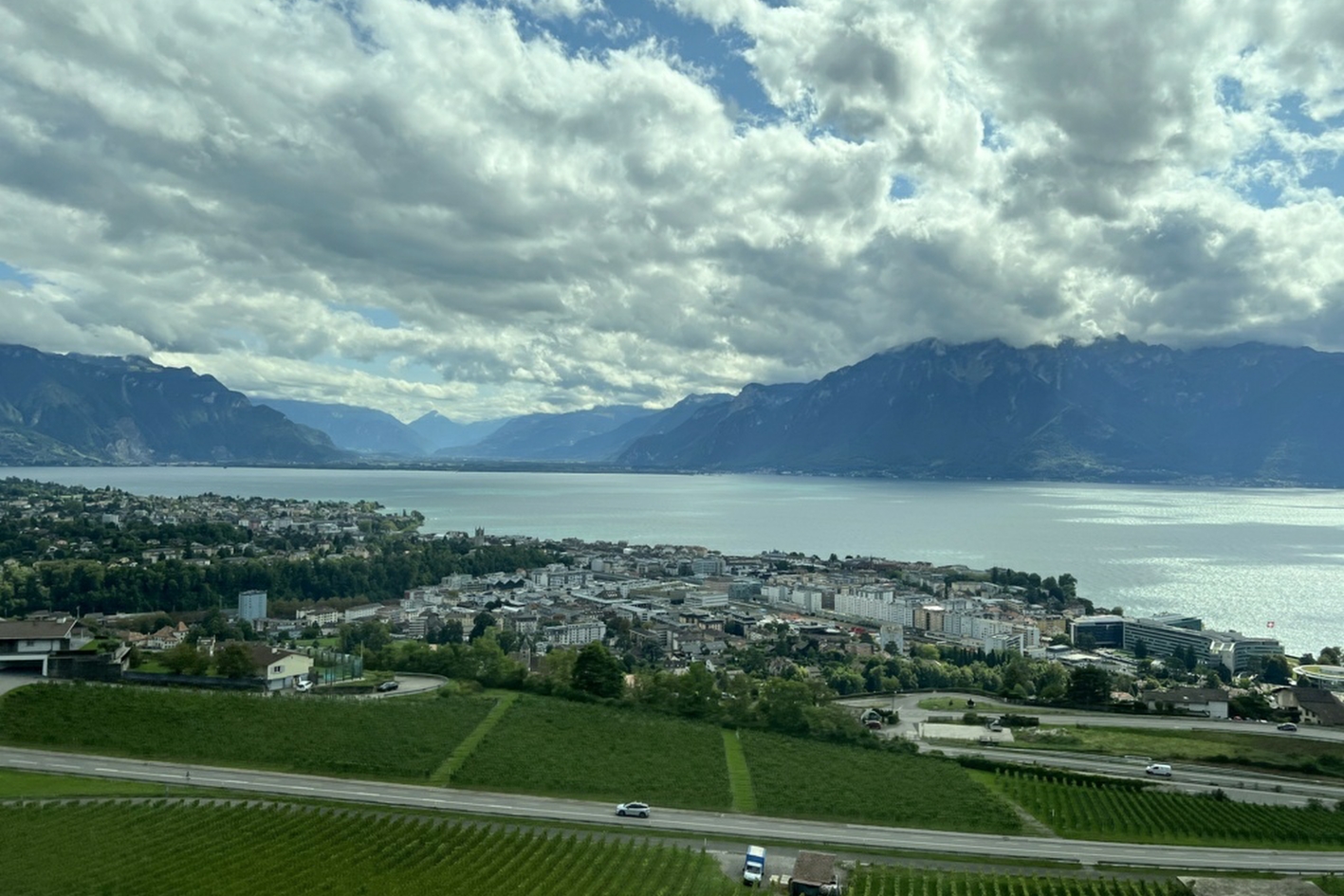
Visits, tastings and dining - a prelude to the competition
" Land of inspiration and heritage classified by UNESCO, spoilt by nature, Lavaux is one of Switzerland?s most beautiful regions among other historic, scientific, sporting, oenotourism and even artistic attractions "
It was with much pleasure that the competitors and judges were welcomed to the 2025 International Final of the Jeunes Sommeliers Competition, held in the magnificent city of Geneva from September 10th - 13th.
Geneva - a city synonymous with refinement, precision, and international fellowship - added a distinguished character to this year’s Final, especially given that it was concurrent with Switzerland's autumn Grand Chapitre.
A sincere thank you went to the Bailliage of Switzerland under the leadership of Bailli Délégué Thomas Kuhn (a Member of the Conseils d’Administration and Magistral), ably supported in particular by Échanson Nadim Arfan (recently appointed as a Member of the Conseil Magistral) and Alain Brunier, Bailli of Geneva.
In this article we focus on the events in the programme in the two days prior to the start of the competition.
Marie Jones
International Vice-President
Chair, International Jeunes Sommeliers Competition Committee
Photos courtesy of Christine Kuhn-Müry, Officier, Bailliage of Bâle-Campagne, Switzerland
Wednesday, September 10th
The competitors arrived at the Hotel Hood during the day. A new design hotel, its located in the Eaux-Vives district, a vibrant neighbourhood close to Lake Geneva.
The opening dinner was held at HC Restaurant, on Zurlinden Street in Geneva. A casual “get to know you” style event saw the group enjoy local cuisine, using fresh, organic, seasonal produce. The beef sliced into succulent slices was agreed to be the “star of the show”.
Thursday, September 11th
The judges arrived at the Hotel Métropole during the day. Meanwhile, the competitors departed by coach for an educational trip to the Lavaux region vineyards. Land of inspiration and heritage classified by UNESCO, spoilt by nature, Lavaux is one of Switzerland’s most beautiful regions among other historic, scientific, sporting, oenotourism and even artistic attractions.
Lavaux owes its splendour to the decline of the Rhône glacier and the Cistercian monks who, in the 12th century, built miles of walls and terraces that are carefully maintained by today's winegrowers. These craftsmen and women produce excellent wines that ripen thanks to three sources of heat: the sun, the reflection of Lake Geneva and the heat given out by the stone walls at night. The group could look forward to tasting the Chasselas, Pinot Noir and other grape varieties certified by three AOC (Appellations d'Origine Contrôlées) labels: Lavaux, Dézaley and Calamin. Before being recognised by UNESCO in 2007, this harmony between man and nature already enchanted contemplative walkers and inspired artists.
Visit to Cave de Champ Clos (Winemaker: Christelle Conne)
As far back as the 15th century, the Conne family cultivated vines on the slopes of Lavaux. Today, Christelle Conne has taken over from her parents Claudine and Jean-Michel Conne. Proud to be perpetuating values that are firmly rooted in the terroir, the Cave Champ de Clos is also a dynamic business, with a vineyard manager surrounded by a team of permanent and temporary vineyard employees for tasks such as leaf removal and harvesting.
Lunch and a tasting at Restaurant le Chalet du Mont-Pelrin
The restaurant’s overlooks the terraced vineyards. Jérôme Aké Béda - the only Officier Maître Sommelier member in Switzerland - shared his passion and knowledge of the region’s emblematic grape, Chasselas. He then received the Chaîne des Rôtisseurs Professionals plaque, presented by Dominique Koppel, Bailli of the Canton of Vaud.
Visit to Clos du Château
The visit included tasting wines not only from the domaine but also from Domaine de la Roche 1859.
Dating back to 1500, the Clos du Château estate is today run by Lionel & Nathalie Dugerdil. In 1920, Lionel's great-grandfather acquired the estate. Winemaking was stopped in 1934, when efforts were concentrated on maintaining the vines and fields. However, in 2010 Lionel and Nathalie took up the torch. The cellar was completely redesigned and refurbished so that they could vinify directly at the estate and thus ensure the entire production chain. A direct sales area was also added. To date, they offer a range of 16 wines made from 13 different grape varieties, all grown, vinified and bottled at the estate.
Domaine de la Roche 1859
It was in 1859 a farming family, originally from Choully, settled in Dardagny to cultivate its land and press the fruit of its labour using the ashlar wine press dating from 1856 that to this day adorns the magnificent farmhouse. One hundred and sixty years later, Christine and Philippe Bersier with their daughter Sandrine, the fifth and sixth generations, run the estate with the same respect and passion for their terroir. For Sandrine, 2018 rhymed with renewal: giving a name to the estate and creating their own range of wines, an approach that gives full meaning to the richness of the magnificent vineyard and the hope is that Domaine de la Roche 1859 will live on for many generations to come.
Dinner at Hotel Hood
Before service commenced, an impromptu Induction Ceremony was held to firstly promote Head Judge Yohann Jousselin to be an Officier Maître Sommelier, and secondly to induct Fabien Mene, the member of the Panel of Judges put forward by the Bailliage of Switzerland, as a Maître Sommelier.
With the formalities concluded, the group could enjoy the mix of flavours on the menu of the Hood’s restaurant. Influenced by the eastern Mediterranean - from the Aegean to Lebanon - the mix combined well to make for a wonderful evening’s dining. Maître Rôtisseur Jean-Jacques Dantine and his team excelled.
The programme is well under way
Geneva, Jeunes Sommeliers capital 2025
Seventeen competitors were registered by Bailliages around the world - the highest number of participants to date